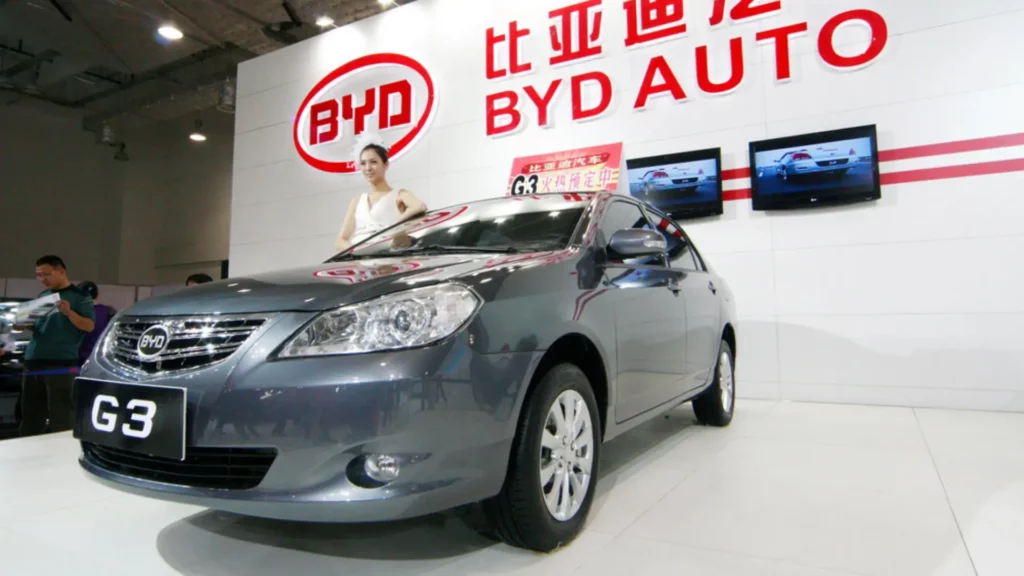Even if there is a legacy for Mercedes and Porsche, consumers are also increasingly interested in Chinese cars.
Mercedes Benz Group AG was once a leader in automotive refinement and is now having declining sales and profit, showing how China is affecting even the profitable upscale end of the auto industry.
Manufacturers led by BYD Co. have made ‘Made in China,’ the global symbol of luxury in the electric vehicle era, by fighting for dominance in the auto industry after competing with companies like Mercedes and BMW AG in their home market, they are extending to Europe.
Mercedes announced its lowest profitability since the split in 2021 to become more agile, and Porsche AG will cut costs and reevaluate its model after a decline in demand in China.
Usually, the perception of luxury brands is safer due to their legacy and high-end status, but China has upset the automobile industry by introducing low-cost EVs, which prompted the EU to impose tariffs to turn them away, now the $1.2 trillion market for premium and luxury cars is in question, doubting their assumption.
Hongqi of the FAW Group and Yangwang of BYD displayed their limousines and SUVs during the Paris car show and aimed to compete with European consumers against Mercedes, Porsche, and Rolls Royce by threatening European manufacturers by offering the latest digital technology with comfortable features like leather dashboards and champagne coolers at competitive prices.
Nio Inc. has opened showrooms in Berlin, Oslo, and Amsterdam to display EL8 sport utility cars worth €95,000. Polestar has started in the European market and will enter France, Hungary, and Poland in 2025. BYD is talking with local dealer groups for its Yangwang brand, which sells high-end road cars that float on water.
Xiaomi Corp, the ‘Apple of China,’ is investing $10 billion to enter the car market. In March, it launched its SU7 to compete with cars like the Porsche Taycan.
Xiaomi hinted at its European ambitions by displaying its SU7 during the Olympic Games in Paris, setting up a pit garage in the famous Nürburgring racetrack. Lei Jun, Xiaomi CEO, announced plans to introduce the car globally.
China’s entry into the luxury car is making Europe’s automakers vulnerable. BMW and Volkswagen have all warned about its lower-than-expected profits in the upcoming weak. They are only showing muted growth due to the decline in the largest car market in the world.
For many years, Chinese consumers bought most S-Class sedans, and China was the only place Mercedes’ ultra-luxury Maybach was in high demand. However, profitability fell to 4.7% in Q3 from its goal of 8%, which shows a decline in sales.
Mercedes CFO Wilhelm said they are taking a cautious approach to market and will increase their efforts to reduce the costs and efficiency throughout the company.
Europe used to control the high-end car market, but after introducing the Tesla Model S in 2012, consumers wanted more digital features than traditional automotive quality.
Tu Le, the head of the consultancy business Sino Auto Insights, states that luxury Chinese companies will have a significant opportunity in Europe with enough time, patience, and investment. The Chinese companies are trying to convince European consumers that their vehicles are dynamic and performance-oriented.
Even if there is a legacy for Mercedes and Porsche, consumers are also increasingly interested in Chinese cars. Luxury cars have the highest profit, and customers tend to be loyal. McKinsey’s report states that the Chinese market will grow faster than the mass market and have a long path for growth.
BYD showcased its Yangwang U8 in Paris, worth 1.1 million yuan, to attract European consumers. The car can move sideways due to the motors on each wheel. German model costs twice as much as the Mercedes electric G-Class, even if they share similar features.
Seres Group and Huawei Technologies Co. developed a high-end EV brand, Aito. The SUV costs half as much as the German models but has flat leather seats and a drop-down movie screen.
The car brands even use elite tournaments to increase their brand awareness. Aston Martin, Lamborghini, Ferrari, Chery Automobile Co., and SAIC Motor Corp. MG attended the Goodwood Festival of Speed in the UK. BYD’s Yangwang brand also participated in the Bicester Heritage Festival, which honors vintage UK sports cars.
So far, the Chinese car brands have not impacted the automobile industry. However, Lexus from Toyota Motor Corp. has proved that it is not closed in the luxury market of Europe. Even if it has initial skepticism, they have established a niche and sold 56,000 cars in the first nine months of this year.
Michael Dunne, the chairman of Dunne Insights LLC, states that the customers for luxury cars still have a soft spot for their three-pointed stars, but customers in the West do not appear to appreciate the digital experience.
Red Flag, also known as Hongqi, promoted its brand legacy in Paris, but it was not Mao Zedong’s favorite brand. It offers tailored ceramics and suits showing Chinese craftsmanship.
The Hongqi Guoya limousine, with its interior made of chrome, grained wood, and leather, was the main attraction in the automobile sector, and its exterior made from winges hood ornament, which resembles Rolls Royce’s famous car Spirit of Ecstasy.
It was not a coincidence since the former Rolls Royce design chef Giles Taylor has worked with Hongqi since 2018, making the brand more appealing to the global audience.
Brian Gu, the vice chairman at Xpeng, says there should be value beyond selling expensive cars. The Chinese automaker offers the G9 SUV with massage seats and a 22 speakers sound system worth €60,000. He added that he would offer convenience, comfort, safety, and more features modelled to the car.
